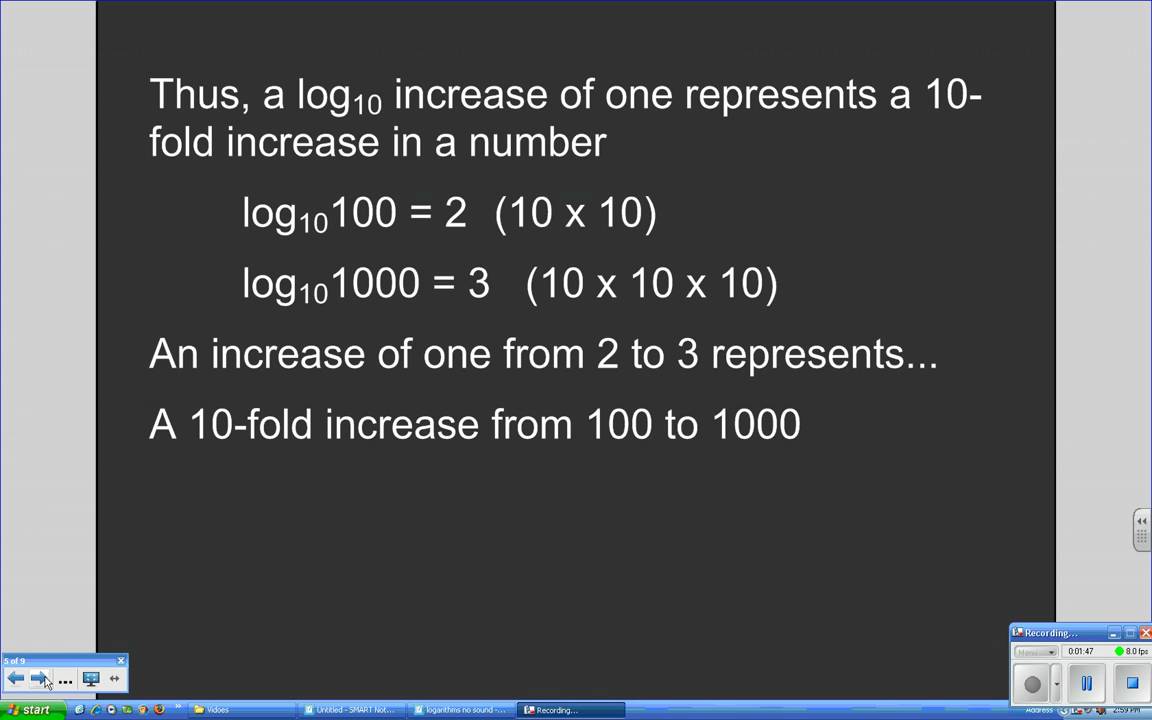LOGARITMA ITU GAMPANG!! Bahas Logaritma Kelas 10 | Study With Jerome Polin
Summary
TLDRIn this educational video, the host, Jerome, delves into the intriguing world of logarithms, drawing parallels with exponentiation and explaining the close relationship between the two mathematical concepts. He breaks down the concept of logarithms by providing examples and simplifying complex ideas, making them accessible to viewers. Jerome also covers key properties of logarithms, such as multiplication and division rules, and their applications in solving problems. The video is designed to help viewers grasp the fundamentals of logarithms and encourages practice through numerous examples to solidify understanding.
Takeaways
- 😀 Exponents and logarithms are closely related mathematical concepts.
- 😊 Exponents involve raising a base number to a power, e.g., 2^3 = 8.
- 🧠 Logarithms are the inverse operations of exponents, solving for the exponent in an equation like 2^x = 8 gives x = 3.
- 📚 Logarithms can be expressed as 'log base a of b = c', meaning 'a raised to the power of c equals b'.
- 🔢 Basic properties include a log 1 = 0, where any logarithm of 1 equals 0.
- 🤔 Logarithms can transform multiplication into addition and division into subtraction, e.g., log(ab) = log(a) + log(b) and log(a/b) = log(a) - log(b).
- 🔍 Logarithms can simplify expressions with powers by bringing down exponents as coefficients, e.g., log(a^m) = m * log(a).
- 📏 Logarithms with different bases can be converted using the change of base formula, log_b(a) = log_c(a) / log_c(b).
- 💡 Logarithms facilitate solving equations where exponents are unknown, applying properties like log_b(x) = y implies x = b^y.
- 📝 Practice and familiarity with exponent rules are crucial for mastering logarithmic calculations.
Q & A
What is the main topic discussed in the video?
-The main topic discussed in the video is logarithms, their properties, and how they relate to exponents.
What is the relationship between exponents and logarithms as explained in the video?
-The video explains that exponents and logarithms are closely related, with the logarithm being the inverse operation of exponentiation. For example, if 2^3 = 8, then log2(8) = 3.
What is the logarithmic equation represented by 'a log b = c'?
-The equation 'a log b = c' represents the power to which the base 'a' must be raised to obtain the number 'b', where 'c' is the result of that exponentiation.
What is the significance of the logarithm base being omitted in some cases?
-When the base of a logarithm is omitted, it is commonly assumed to be base 10, such as in 'log 10' which can be written as 'lg 10' and equals 1.
What is the first basic property of logarithms mentioned in the video?
-The first basic property mentioned is that any number with a logarithm of 1 equals 0, i.e., a log 1 = 0.
How can the multiplication of logarithms be simplified according to the video?
-The multiplication of logarithms can be simplified by converting it into addition, for example, a log b * c can be rewritten as a log b + a log c.
What is the rule for dividing two logarithms with the same base as shown in the video?
-When dividing two logarithms with the same base, the result is the subtraction of the logarithms, i.e., log b / c is equivalent to log b - log c.
How can the power of a logarithm be expressed in terms of multiplication?
-The power of a logarithm can be expressed as multiplication, for example, a log b^m can be rewritten as m * a log b.
What is the logarithmic identity involving the reciprocal of the base?
-The logarithmic identity involving the reciprocal of the base is log b = 1/b log a.
How can the video's explanation of logarithms help in understanding their properties and solving problems?
-The video's explanation of logarithms as the inverse of exponentiation and the detailed discussion of their properties provide a clear foundation for understanding how to manipulate and solve logarithmic equations.
Outlines

This section is available to paid users only. Please upgrade to access this part.
Upgrade NowMindmap

This section is available to paid users only. Please upgrade to access this part.
Upgrade NowKeywords

This section is available to paid users only. Please upgrade to access this part.
Upgrade NowHighlights

This section is available to paid users only. Please upgrade to access this part.
Upgrade NowTranscripts

This section is available to paid users only. Please upgrade to access this part.
Upgrade NowBrowse More Related Video

The Beauty of Mathematics | Mathematics Motivational Video

Limit Fungsi Aljabar • Part 4: Bentuk Tak Tentu dan Sifat-Sifat Limit Fungsi

Konsep Dasar dan Sifat-sifat Logaritma Matematika Peminatan Kelas 10

EKSPONEN ITU ASYIK! Bahas Eksponen Kelas 10 | Study With Jerome Polin

Logarithms and the pH scale

Definisi Logaritma dan Contoh soal
5.0 / 5 (0 votes)